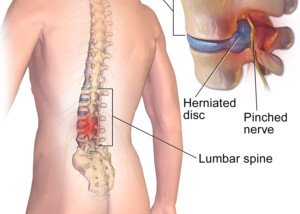
Huge mistake if you think your housework magically replaces the physical therapy you’ve been prescribed for a herniated disc.
You’ve been diagnosed with a herniated disc.
You had a session of physical therapy with a specialist, who showed you how to do the exercises at home.
After your first home session, you’ve decided that the exercises are a waste of time.
They’re boring and don’t even seem like they could help anything — mostly easy movements that don’t immediately make your sciatica feel better.
(Tip: You should wait about three weeks to determine if physical therapy works—and that’s only if you’ve been sticking to it faithfully, by the book.)
“Physical therapy is not just about movement,” says Dr. Michael Perry, MD, member of the North American Spine Society and American College of Sports Medicine.
“It incorporates using your muscles and increasing your flexibility through a set of engagements that are focused on a particular area. You aren’t going to get that in daily activity.
“You need to intensely focus on that particular part of your body.
“Physical therapy is designed to alleviate pain and strengthen and tone core muscles.
“And once you learn these modalities, you can do a lot of them at home.”
If you still believe that “all that housework” you do is just as good as any physical therapy exercises, then how come you developed a herniated disc in the first place?
 Dr. Perry is chief medical director and co-founder of USA Spine Care & Orthopedics, and is frequently sought out for his minimally invasive spine surgery expertise.
Dr. Perry is chief medical director and co-founder of USA Spine Care & Orthopedics, and is frequently sought out for his minimally invasive spine surgery expertise.
 Lorra Garrick has been covering medical, fitness and cybersecurity topics for many years, having written thousands of articles for print magazines and websites, including as a ghostwriter. She’s also a former ACE-certified personal trainer.
Lorra Garrick has been covering medical, fitness and cybersecurity topics for many years, having written thousands of articles for print magazines and websites, including as a ghostwriter. She’s also a former ACE-certified personal trainer.
.









































